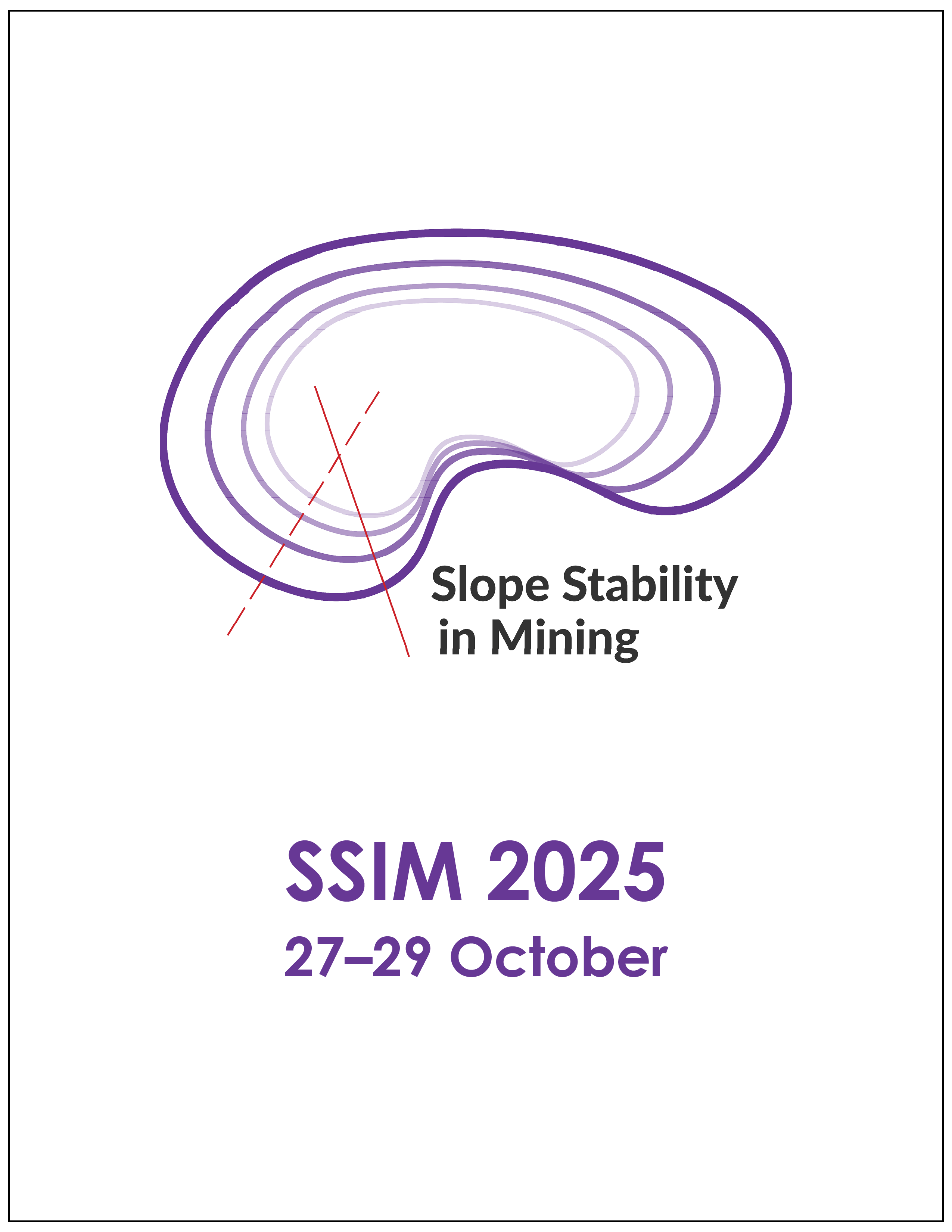Approach to steepening of slopes in Pilbara iron ore mines

|
Authors: de Bruyn, I; Mylvaganam, J; Jung, J; Le Roux, K; Young, D; Casparis, D |
DOI https://doi.org/10.36487/ACG_repo/2535_17
Cite As:
de Bruyn, I, Mylvaganam, J, Jung, J, Le Roux, K, Young, D & Casparis, D 2025, 'Approach to steepening of slopes in Pilbara iron ore mines', in JJ Potter & J Wesseloo (eds), SSIM 2025: Fourth International Slope Stability in Mining Conference, Australian Centre for Geomechanics, Perth, https://doi.org/10.36487/ACG_repo/2535_17
Abstract:
Rio Tinto Iron Ore has identified that the highwall slope angles in its Pilbara open pits to date are generally conservative, as much of the wall exposure is built to plan and is without major wall performance issues. This design conservatism has largely been due to gaps in orebody knowledge and layers of conservatism in the design approach. As mining footprints and crests become more constrained and more mining is taking place below the groundwater level, robust methodologies to steepen and safely manage slopes have become necessary to support waste movement reduction, increase ore delivery, and identify high-risk areas. A project was commenced to identify the methodologies required to confidently steepen pit walls using selected open pits as initial cases for assessment and trial. The project leveraged off industry best practice to identify points of conservatism and explore levers in the design pathways that would allow for significant increases in interramp angles to be achieved without undue risk. An extensive set of generic analyses was undertaken to understand the sensitivity of inter-ramp slope stability in the pits to various factors, with the main ones being the presence of relatively strong layers in the weaker stratigraphic units and the proportions of strong materials within the stratigraphic unit; the impact of interramp slope height in various materials, bedding dip angles and obliqueness of bedding strike relative to the slopes; the definition of the disturbance zone behind the pit slope; the use of various slope stability analysis methods in 2D and 3D; and the radius of curvature of pit slopes. This allowed for a robust assessment and design approach to be developed and for preliminary indication of potential optimum slope angles to be achieved. A detailed re-assessment of rock mass domains and properties at the test sites was then carried out and stability analyses conducted for the purpose of identifying optimum slope angles and the batter-berm geometries that would support these. This resulted in the inter-ramp angles in the initial focus pits being significantly steepened. This paper presents an overview of the approach developed and the key levers identified for slope steepening in these Pilbara iron ore pits.
Keywords: slope steepening, design approach, points of conservatism, key levers
References:
Bieniawski, ZT 1989, Engineering Rock Mass Classifications, Wiley, New York.
Castro, LM, Carvalho, J & Sá, G 2013, ‘Discussion on how to classify and estimate strength of weak rock masses’, in PM Dight (ed.), Slope Stability 2013: Proceedings of the 2013 International Symposium on Slope Stability in Open Pit Mining and Civil Engineering, Australian Centre for Geomechanics, Perth, pp. 205–217,
Hoek, E, Carranza-Torres, C & Corkum, B 2002, ‘Hoek-Brown Failure Criterion – 2002 edition’, 5th North American Rock Mechanics Symposium and 17th Tunnelling Association of Canada Conference: NARMS-TAC, Tunnelling Association of Canada, Toronto, pp. 267–271.
ISRM 2007, The Complete ISRM Suggested Methods for Rock Characterisation, Testing and Monitoring: 1974-2006, ISRM Turkish National Group, Ankara.
ITASCA 2023, FLAC3D 2D Finite Difference Slope Stability Analysis, computer software, version 6, www.itascasoftware.com
Mylvaganam, J, de Bruyn, I, & Paul J 2022, ‘Important considerations for pit slope design analyses in anisotropic bedded rock masses’ Proceedings of Slope Stability 2022, SRK Consulting, Tucson.
Parkes, J, Young, D, Jung, JD & Goldstein, D 2023, ‘Rio Tinto Iron Ore mines actual failure percentages case study’, in PM Dight (ed.), SSIM 2023: Third International Slope Stability in Mining Conference, Australian Centre for Geomechanics, Perth, pp. 105–114,
Rocscience Inc 2024, RS - 3D Finite Element Slope Stability Analysis, computer software, Toronto.
Rocscience Inc 2022a, Slide - 2D Limit Equilibrium Slope Stability Analysis, computer software, Toronto.
© Copyright 2025, Australian Centre for Geomechanics (ACG), The University of Western Australia. All rights reserved.
View copyright/legal information
Please direct any queries or error reports to repository-acg@uwa.edu.au
View copyright/legal information
Please direct any queries or error reports to repository-acg@uwa.edu.au

